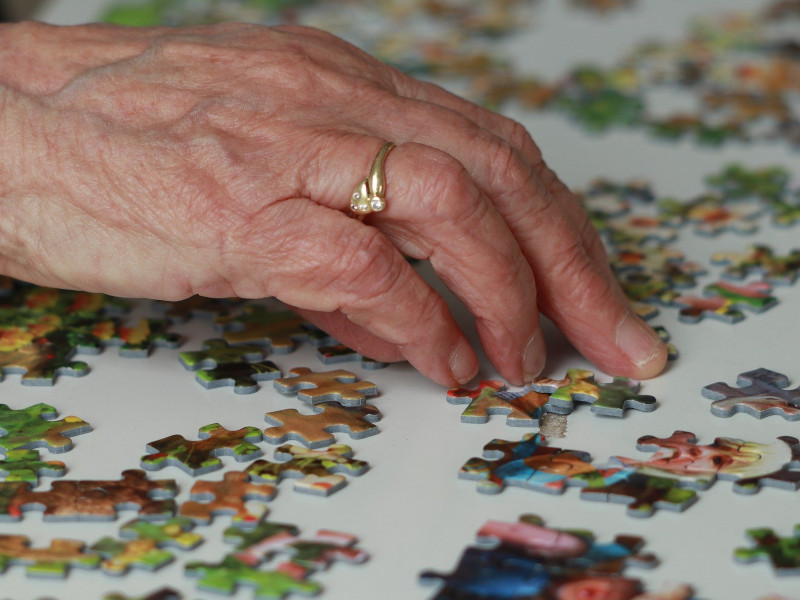Occupational therapy supports people of all ages whose mobility is restricted by illness, disability or signs of aging. The older generation in particular needs help with targeted exercises to maintain their independence and the quality of life that goes with it. Johannes Wittgen, occupational therapist at Seniorenwohnen Fürstenfeldbruck Buchenau, presents different types of occupational therapy and how they affect quality of life.
Hanna A. practices standing on one leg. Not so easy. Although she holds onto the edge of a table, the 89-year-old has trouble alternately lifting first her left leg and then her right. It also hurts to bend her knee during this exercise. Johannes Wittgen is aware of these difficulties. He describes occupational therapy as „helping people who are physically limited or at risk of becoming so.“
This applies not only to seniors with signs of old age or injuries. But also to younger people who are limited by illnesses or disabilities. In numbers: According to the Remedies Report of the AOK Scientific Institute, a good 28 million occupational therapy treatments are billed each year. „Older people are particularly affected. Because with age, muscle strength and motor skills are bound to diminish,“ says the 31-year-old.
Group training: social interaction and physical demands
Resident Hanna A. recently fell and injured her hip. „That’s when it’s normal to be scared and put your body on standby. It’s all to avoid a repeat,“ Wittgen says, speaking from years of experience. Now, however, the senior has lost muscle mass due to lack of exercise. Everyday routines, such as going to the bathroom, become a challenge. „A textbook case,“ says the expert. And reason for Hanna A. to join occupational therapy at the home.
Sensible for people with increased risk of falling is the approach of fall prevention. Once a week, Wittgen gives the group class for up to eight participants at a time. Through balance exercises that strengthen the muscles, the elderly can practice walking safely there – with and without assistance. He also shows the retirees how to use grab bars and rollators in his training sessions. In addition, Wittgen provides information about tripping hazards in everyday life and helps those affected to eliminate them in their immediate environment. „Fall prevention is one of the most popular therapy approaches and shows great success.“ According to the 31-year-old, after just a few sessions, participants are more confident in their gait and have more strength to navigate everyday routes.
In addition to fall prevention, the occupational therapist offers other group therapy options. „Exercising the head and body together is more fun and provides lonely people with additional social contact,“ says Wittgen. Take creative therapy, for example. Here, up to ten participants hone their motor skills and memory once a week through manual work, such as handicrafts and painting. Or everyone plays, rhymes and puzzles together. This is fun and training at the same time.

Individual therapy: targeted practice and emotional support
„In individual sessions, I try to compensate for or restore lost abilities with targeted movement exercises,“ Wittgen says of the individual approach to occupational therapy. In sessions lasting up to 90 minutes, he trains the motor skills of those affected in a targeted manner, strengthens specific muscle groups or trains the sense of balance – preferably several times a week. The basic building block of the therapy is targeted practice of the movements involved in everyday activities, such as getting dressed, eating or combing one’s hair.
„With individualized treatment, I can spend more time with the person and their concerns.“ That personal and emotional, he says, is what people need in addition to training. „Because when the body no longer cooperates as usual, it can be mentally stressful,“ Wittgen knows from intensive discussions with those affected. That’s why the occupational therapist regularly sits down with residents and relatives to listen to their problems and concerns. In order to then find individual solutions together. „Together, we can shape the residents‘ environment so that their daily lives are more pleasant.“ This is best achieved when the elders of society can do many things independently.


